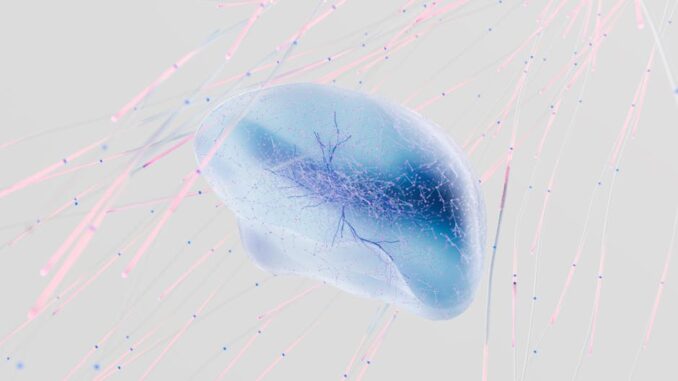
Summary
Scientists uncover how medulloblastoma, the most common malignant pediatric brain tumor, spreads through the leptomeninges, membranes surrounding the brain and spinal cord. This discovery identifies a crucial communication pathway between the tumor and surrounding cells, offering a potential new target for treatment. This breakthrough holds promise for improving survival rates and quality of life for children affected by this devastating disease.
Secure patient data with ease. See how TrueNAS offers self-healing data protection.
** Main Story**
Okay, so let’s talk about medulloblastoma metastasis. It’s a tough subject, particularly when we’re talking about kids, right? Medulloblastoma, being the most common malignant brain tumor in children, really throws down the gauntlet due to how readily it metastasizes. And as you know, metastasis – cancer cells spreading from their original spot to wreak havoc elsewhere – it’s the primary reason why kids with this disease, sadly, don’t make it. But! There’s some seriously exciting news. A recent study in Nature Cell Biology has shed light on how medulloblastoma spreads within the leptomeninges – those protective membranes around the brain and spinal cord. This could, and I really mean could, pave the way for targeted therapies, and honestly, that’s a game changer.
Decoding the Cellular Chit-Chat
What’s really fascinating is that this study uncovered a previously unknown communication line between metastatic medulloblastoma cells and fibroblasts within the leptomeninges. Fibroblasts, generally, are those helpful cells that help with tissue repair and provide structural support. Now, get this: researchers found that medulloblastoma cells pump out a protein called platelet-derived growth factor, or PDGF. PDGF is like a siren call; it recruits leptomeningeal fibroblasts right to the tumor, and then it reprograms them into tumor-specific meningeal fibroblasts. So, instead of doing their normal job, they start aiding the tumor. These reprogrammed fibroblasts then boost tumor growth by releasing bone morphogenetic proteins 4 and 7 (BMP4 and BMP7) – which, surprise, further fuel tumor colonization and its nasty spread. It’s almost like the tumor is hiring its own construction crew, if you think about it, and the tumor is not hiring them to build houses I can tell you that much.
A Possible Breakthrough
Think about it for a second: identifying this PDGF-BMP signaling cascade gives us a critical understanding of the complex tango between tumor cells and their immediate environment. By, hopefully, disrupting this communication pathway, researchers are aiming to develop new treatments that can precisely target and control the spread of medulloblastoma. This breakthrough could significantly boost survival rates and, crucially, dial down those awful long-term side effects we see with current treatments. And, honestly, wouldn’t that be incredible?
Current Treatments and What’s Next
Typically, treatment for medulloblastoma is a mix of surgery, radiation, and chemo. What you do kinda depends on where the tumor is, how quickly it’s growing, how far it’s spread, the kid’s age, their overall health…you know the drill. While these treatments do work, they bring a host of long-term side effects, like learning problems, hormone issues, and hearing loss. Not ideal, to say the least. But, this recent discovery of the PDGF-BMP signaling pathway offers a promising new avenue for developing targeted therapies. Targeting this pathway and developing new, effective treatment strategies is very promising. I mean, can you imagine a future where we can target just the bad cells, leaving the healthy ones alone? That’s the dream, isn’t it?
Progress in Treating Medulloblastoma
Beyond this discovery, we’re seeing other advances too! Molecular analysis is now crucial, helping us classify tumors more precisely and tailor treatments. There’s also ongoing clinical trials to reduce radiation and chemo doses, so hopefully we can cut down on those side effects. And, hey, the FDA just approved sodium thiosulfate to help protect against chemo-related hearing loss, which is another win! All of this is down to us getting a better grip on the complex biology of medulloblastoma and, of course, a shared determination to get better outcomes for these children. Sure, there’s a long road ahead, but these developments give us hope for a future where medulloblastoma is treated more effectively, so long-term survival with fewer side effects becomes the standard, not the exception.
The Importance of More Research
Now, research into medulloblastoma’s underlying mechanisms is crucial. Current studies are digging deep into aspects like signaling pathways, how the tumor interacts with its environment, and developing new targeted therapies. These endeavors hold the promise of improving the lives of children affected by medulloblastoma, maybe even finding a cure in the future. And that, at the end of the day, is what really matters. So, keep an eye on this space, because I’ve got a feeling we’re on the cusp of some serious breakthroughs.


The discovery of the PDGF-BMP signaling cascade is fascinating. Could this understanding of tumor-microenvironment communication be applied to other cancers that exhibit similar metastatic behavior, potentially broadening the impact of this research?
That’s a great question! The principles of tumor-microenvironment interaction are certainly relevant to other cancers. Research is ongoing to explore if disrupting similar signaling pathways could be effective in cancers with comparable metastatic mechanisms. It’s a promising avenue for broadening the impact of this discovery!
Editor: MedTechNews.Uk
Thank you to our Sponsor Esdebe
The discovery of the PDGF-BMP signaling cascade offers a promising avenue for targeted therapies. Investigating how the tumor microenvironment is reprogrammed opens doors for innovative treatment strategies that could minimize long-term side effects in young patients.
Absolutely! The potential to minimize long-term side effects, especially in young patients, is a driving force behind this research. Understanding the tumor microenvironment and how it’s reprogrammed opens up exciting avenues for more precise and less invasive treatments. This could really change the landscape of medulloblastoma therapy!
Editor: MedTechNews.Uk
Thank you to our Sponsor Esdebe